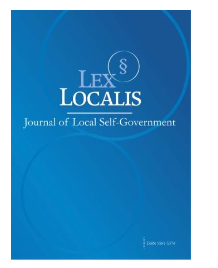STEM-MEDIATED SYNTHESIS ON ANDROGRAPHIS PANICULATA - AN ANTI INFLAMMATORY AND EMBRYONIC TOXICOLOGY EVALUATION OF SELENIUM NANOPARTICLES
DOI:
https://doi.org/10.52152/rbvvve23Keywords:
Andrographis paniculata, selenium nanoparticles,anti-inflammatory, embryonic damage,Egg Albumin Denaturation Assay,Zebrafish embryo toxicityAbstract
Introduction:Traditional medicine has made use of the anti-inflammatory qualities of Andrographis paniculata to enhance patient outcomes. The negligible toxicity and biological benefits of selenium nanoparticles (SeNPs) make them interesting. This work investigates the synthesis of selenium nanoparticles utilizing extracts from Andrographis paniculata using a STEM-mediated method, and assesses the toxicity and anti-inflammatory properties of the resulting material for developing embryos. Aim: To synthesize selenium nanoparticles using Andrographis paniculata extracts and assess their anti-inflammatory properties and embryonic toxicity to evaluate their potential for biomedical applications. Material and methods : Using extracts from Andrographis paniculata, selenium ions were reduced to generate selenium nanoparticles. Using scanning transmission electron microscopy (STEM), the nanoparticles was evaluated. Using a panel of tests, comprised of the bovine serum albumin (BSA) assay for protein denaturation, the membrane stabilization assay for erythrocyte membrane protection, and the Egg Albumin Denaturation Assay is used to evaluate the anti-inflammatory and analgesic properties of substances by measuring their ability to inhibit the denaturation of egg albumin, a model protein. Zebrafish embryo models are employed for evaluating the toxicity of embryonic materials, in addition to hatching and viability rates have been recorded using graphical analysis. Results: The production of nanoparticles made of selenium with an identical size distribution was validated by STEM analysis. Profound anti-inflammatory effects were demonstrated by anti-inflammatory assays, which demonstrated a considerable suppression of protein denaturation in the BSA assay, increased membrane stabilization in the membrane stabilization assay, and decreased erythrocyte aggregation in the EA assay. Adverse effects were dose-dependent at higher doses, but at lower concentrations zebrafish embryo toxicity tests showed little harm. The viability and hatching rate graphs showed that selenium nanoparticles were well-tolerated at the right doses. Conclusion: With the help of Andrographis paniculata extracts, selenium nanoparticles were effectively synthesized, and at the right doses, they demonstrated strong anti-inflammatory efficacy and minimal embryonic damage. These findings point to the possibility of using selenium nanoparticles mediated by Andrographis paniculata in anti-inflammatory treatments and other biological contexts.
Downloads
Published
Issue
Section
License
Copyright (c) 2025 Lex localis - Journal of Local Self-Government

This work is licensed under a Creative Commons Attribution-NonCommercial-NoDerivatives 4.0 International License.








